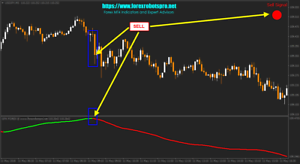Trading on forex markets successfully is not a random walk as it requires a promptly executed trading plan. Though it is not easy, many traders are consistently making profits and the reason being the usage of forex indicators. The market environment is never going to be rational. It displays a tendency of patterns under certain conditions. It implies that specific price patterns are going to occur time and again. Forex indicators are devised such that they are good at identifying such patterns. These indicators will identify more opportunities if the trader ensures using feature-rich software. visit here for more information
From a market point of view, indexes are trading signals helping the trader to make decisions regarding buying and selling.

Different types of indicators:
A vast number of symbols are present, and an experienced trader will have the capability of creating their sign suiting their requirement. In terms of functionality, symptoms can be classified into three groups. They are trend indicators, oscillators, and volumes.
Trend indicators: In a foreign exchange market, these indicate the trends in the dynamics of prices. Price dynamics can further be classified into three categories. They are upward movement, downward movement, and sideward movement. The current direction of price movement is called a trend.
The trend indicators help in determining the trend and to know the price data in a certain period. The trader would be able to visualize the prevailing trend in the market. These are found useful on long price trends as they do not give early signals. Future price changes are not known through these signals. Only the momentary pattern is identified, giving you a chance to make a decision. Moving averages is one among the widely popular trend indicators.
Oscillators: These indicators are used in a steady market where the direction of movement of prices is horizontal. They indicate the fluctuations in prices in the market within the price corridor during the extended period. These indicators are often termed as leading indicators as they are capable of indicating the direction of price movement slightly with a lead or at times simultaneously.
As they predict the future price changes, these are utilized to gain more profit at the cost of risk. As a result, the oscillator is allowing to anticipate the next turn of the trend. It is instrumental in displaying overbuying and overselling on the chart, therefore determining the entry and exit points of the market. The most popular oscillators among traders are relative strength index (RSI), MACD, stochastic oscillator, etc.
Volumes: In fact, there are no volume measures in foreign exchange markets, there are tick volumes available, and the volume indicators in foreign exchange indicate the number of transactions taken place in a specific period. They have columns on the graph, and the length of the column is dependent upon several transactions. The more the number of transactions, the more will be the length of the column. It does not indicate any info regarding the prices at the moment. The accessible volume indicators are the money flow index, on balance volume, etc.

